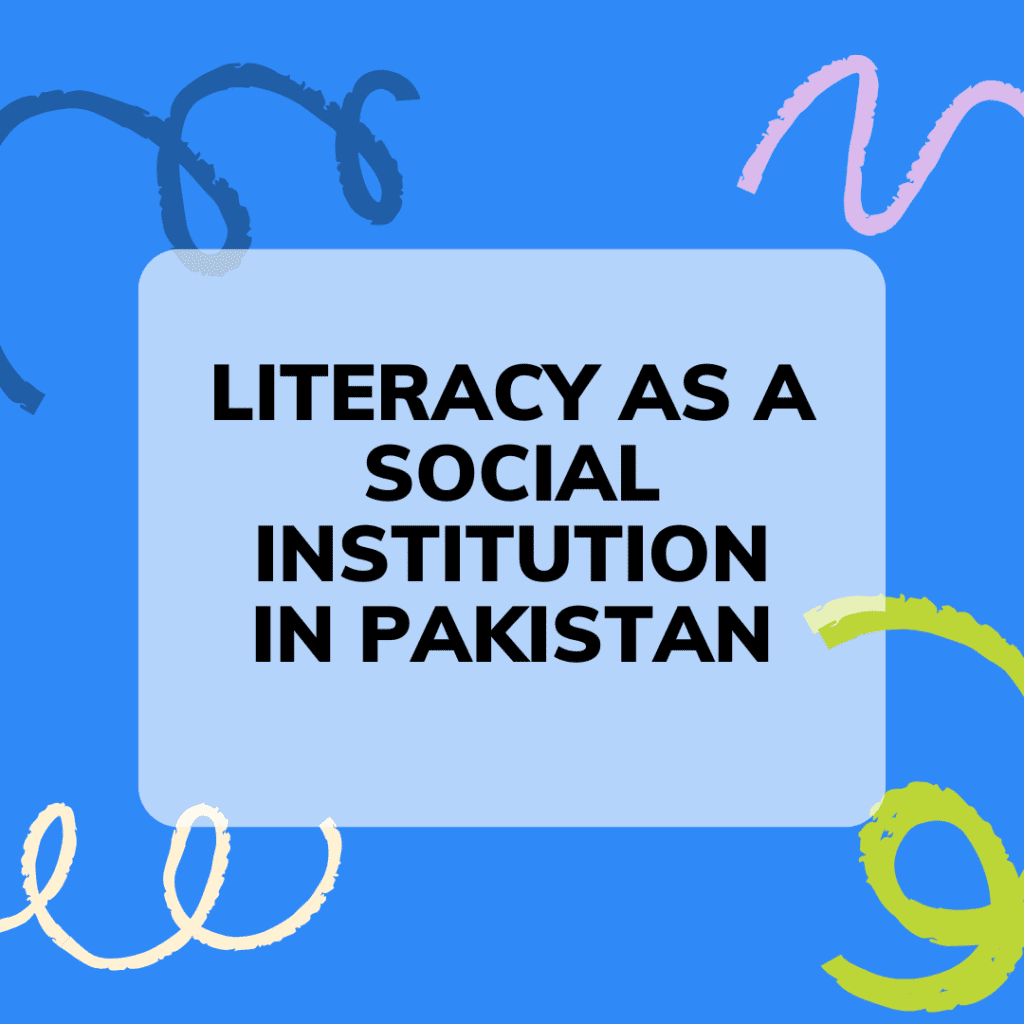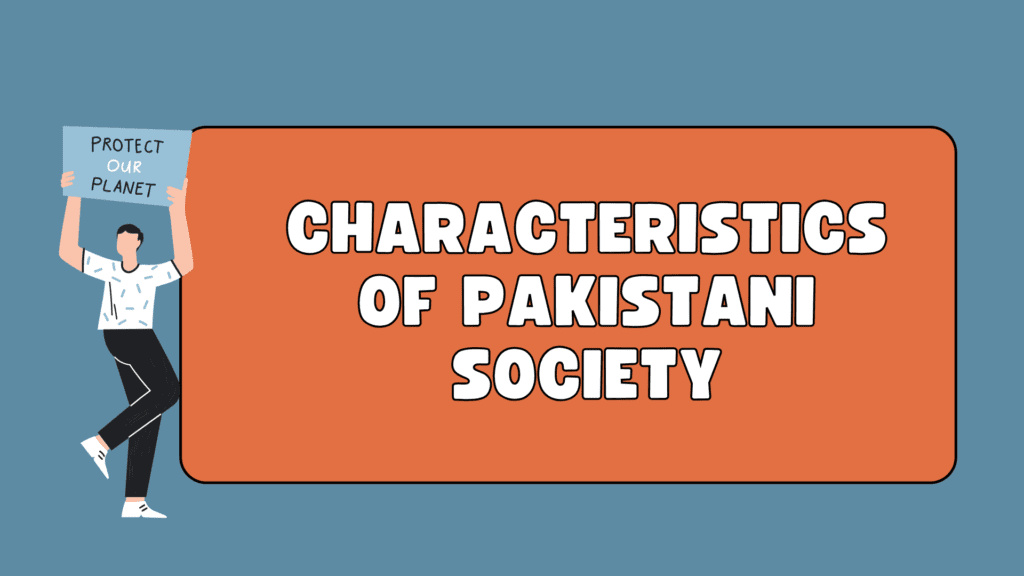Literacy is more than just the ability to read and write—it is a powerful tool that shapes individuals, strengthens communities, and drives national development. As a social institution, literacy in Pakistan functions to socialize individuals, transmit cultural values, empower citizens, and promote equality and social mobility. In a developing country like Pakistan, where education is still a privilege for many, literacy plays a central role in transforming society.
Understanding Literacy as a Social Institution
A social institution is a structured and enduring system of norms and practices that fulfills important functions in society. Literacy becomes institutionalized through formal (schools, colleges) and informal (community centers, media, family) systems.
Functions of Literacy in Society:
-
Socialization: Literacy helps individuals learn the norms, values, and traditions of society.
-
Cultural Transmission: It allows the transfer of cultural knowledge and identity across generations.
-
Empowerment: Literacy enables people to think critically, make informed decisions, and participate in civic life.
-
Economic Development: It equips people with the skills needed for employment, innovation, and economic growth.
-
Social Mobility: Literacy opens opportunities for better jobs and improved living standards.
Literacy in Pakistan: An Overview
According to Pakistan’s Economic Survey and UNESCO reports:
-
The overall literacy rate in Pakistan is around 60%.
-
Male literacy rate is higher (~70%) compared to female literacy rate (~50%).
-
There is a large gap between urban and rural literacy rates.
-
Urban areas like Lahore and Islamabad have higher literacy levels.
-
Rural regions of Balochistan, Sindh, and South Punjab have significantly lower rates.
-
Role of Literacy in Pakistani Society
a. Economic Development
Literacy improves human capital. Literate individuals can access better job opportunities and contribute to national productivity. 📌 Example: Skilled laborers in industries like IT, banking, and health services are usually literate and educated, helping boost Pakistan’s economy.
b. Women’s Empowerment
Literacy empowers women to participate in decision-making, manage health, and educate their children. 📌 Example: Literate mothers in urban centers are more likely to ensure their children go to school, practice family planning, and contribute to the household income.
c. Democratic Participation
Literacy promotes awareness about rights and responsibilities, encouraging informed voting and political engagement. 📌 Example: In cities where literacy is higher, voter turnout tends to be more informed and active, particularly among the youth.
d. Health and Hygiene
Literate individuals understand health information, access healthcare, and make healthier choices. 📌 Example: During the COVID-19 pandemic, literate populations were more likely to follow health guidelines, such as mask-wearing and vaccinations.
Initiatives to Promote Literacy in Pakistan
The government and civil society have launched various initiatives to improve literacy:
a. Government Programs
-
Article 25-A of the Constitution makes education a fundamental right for children aged 5–16.
-
Programs like Ehsaas Taleemi Wazaif provide stipends to encourage school attendance.
-
Non-formal education centers are set up to target dropouts and adult illiterates.
b. NGOs and Private Sector
-
The Citizens Foundation (TCF) operates over 1,600 schools in underprivileged areas.
-
Adult literacy programs by organizations like Idara-e-Taleem-o-Aagahi (ITA) help adults, especially women, learn basic reading and numeracy skills.
c. Technology-based Literacy
-
Digital initiatives, such as Taleemabad App, use cartoons and stories to teach Urdu and basic subjects to young children in fun and accessible ways.
Challenges to Promoting Literacy in Pakistan
Despite progress, several challenges persist:
-
Poverty: Families prioritize earning over education, especially for boys.
-
Gender Inequality: Cultural norms discourage girls from attending school in some regions.
-
Insecurity: Conflict-affected areas lack access to quality education.
-
Weak Infrastructure: Many schools are under-resourced or lack trained teachers.
📌 Example: In rural Balochistan, students often attend schools without proper buildings, electricity, or textbooks.
Literacy and Social Change
Literacy contributes to positive social change by:
-
Reducing child marriage and population growth.
-
Enhancing public awareness on social issues like climate change, corruption, and extremism.
-
Creating a more tolerant, progressive, and informed society.
📌 Example: Literacy campaigns in Punjab and KP have helped reduce dropout rates and promote the importance of girls’ education.
Conclusion
Literacy as a social institution in Pakistan is both a need and a solution. It is essential for social justice, economic development, gender equality, and national progress. Although challenges remain, continued investment in education, community awareness, and equitable access can make literacy a driving force for a brighter future in Pakistan.


